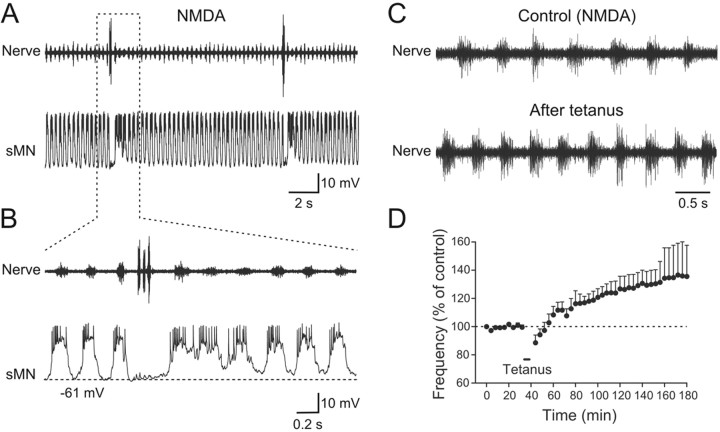Figure 9.
Spontaneous switch between swimming and escape activity and plasticity of the locomotor circuitry. A, During swimming activity induced by NMDA, spontaneous episodes of escape occur with high burst frequency. B, During escape, the swimming activity and the firing of the recorded sMN are interrupted. C, Stimulation of the descending inputs induces an increase of the burst frequency of the locomotor rhythm induced by NMDA. In these experiments, the recording chamber was divided into two pools. Synaptic transmission was blocked in the rostral pool with a Ca2+-free solution containing AP-5 and GYKI 52466. Locomotor activity is induced in the caudal pool by application of NMDA. D, Graph showing the long-term increase in the burst frequency induced by stimulation of the descending inputs.

